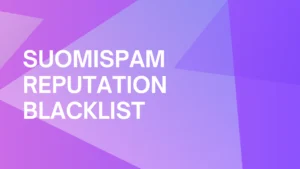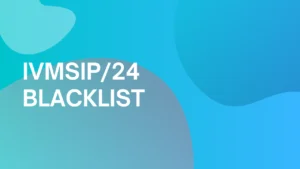
RATS-Spam Blacklist: What Is It and How To Remove Yourself From It
The RATS-Spam Blacklist targets IP addresses associated with spam, viruses, or other abusive behavior, which can disrupt your email deliverability. If you’ve found yourself on this list, don’t worry—there are steps you can take. This article explains:
- Key practices to reduce spam risk and maintain a clean email-sending reputation
- Why your IP may have been flagged and how to verify your listing
- The process for requesting removal and avoiding future blacklistings
What is a RATS-Spam Blacklist?
The RATS-Spam Blacklist is a blacklist that focuses on IP Addresses that have a history of abuse.
An example of abuse is spam resulting from an open-relay, virus traffic, or unsolicited bulk email.
When an unknown email first makes contact with a mail server, determining the authenticity and validity of the sender is difficult to assess due to the amount of unknown information a mail server has available to them with 1 piece of mail.
Blacklists exist for the benefit of the internet in general, as they act as a “No Entry” list based upon what negative behavior other mail servers have reported.
The primary activities that would land a domain onto a blacklist are high bounce rates, a large amount of emails being marked as spam, and low engagement with your emails
How Do I Find Out If I Am On The RATS-Spam Blacklist?
RATS-Spam Blacklists allows users to check their IP Address on their site for free as many times as they’d like to.
It’s a very simple process and does not require a username or password.
There are a lot of reasons your IP Address may have triggered RATS-Spam’s automatic ‘RAT’ detection traps:
- Sending unsolicited spam
- Sending viruses in the forms of links or attachments on emails
- Sending large amounts of bulk mail
How Can I Remove Myself From The RATS-Spam Blacklist?
The email administrator must be the one who requests removal from the RATS-Spam Blacklist.
RATS-Spam offers an option to check your IP Address for free on their website.
If you think your IP Address was added to the RATS-Spam Blacklist by mistake, the process is simple…
- You just need to enter your IP Address
- Search for your IP Address on the long list
- Request removal.
RATS-Spam asks its users to please not abuse this privilege.
How do I reduce my risk of getting onto the RATS-Spam Blacklist?
The best way to avoid getting listed on a blacklist is to engage in proper email practices such as…
- Verify all email addresses before attempting outreach
- Avoid sending unnecessary emails
- Avoid the use of spam words within your email drafts
- Keep your sending volume to a minimum (30-50 a day if your inbox has been warmed up with us for at least 30 days)
Related Terms:
Open-relay: An SMTP server configured to let anyone send emails
Virus-traffic: Numerous malicious emails sent with the intent to spread from device to device to cause damage and gain access to personal information.
Unsolicited Bulk Email (UBE): Email sent to a large audience without their consent.
The Uceprotectl1 Blacklist: Detects emails that have an open-relay on their servers or have a reverse-DNS problem that is causing you to be identified as spam. It is a dynamic-based blacklist that maintains a list of many DHCP (Dynamic Host Configuration Protocol) ranges from Internet Service Providers.



